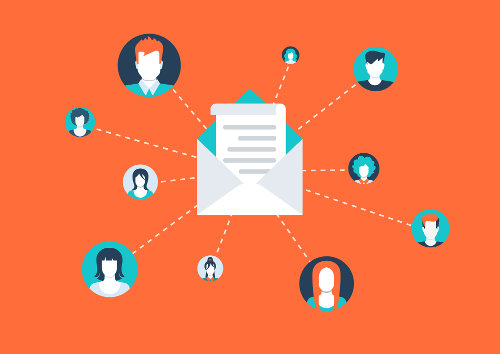Do you know what the number one way to target your email subscribers is?
If you guessed segmentation, you’re spot on. There’s indeed hope for you and your brand in this thing called email marketing! Over half of all unsubscribes occur because a user deems the emails being sent to them as irrelevant.
Who among you can relate to the annoyance of being sent information or offers over email that aren’t applicable to your interests or desires? Go ahead and keep sending offers for hunting gear to vegan animal rights activists — see how long they stick around! Demio Review will assist you with right tools for marketing. SEO stands for search engine optimization. In layman’s language, it the process of capturing traffic from the search engines such as Google listings. Through this read, I am going to give you facts about the SEO business, current market status of SEO as well as the future projections in this field. You can check out this interview article for local lead generation.
Try searching Google for any kind of brand name. Most of the results you get in the top 10 will be from the company website. If your search term happens that the name of the store or brand, you’ll get several results in the top 10 out of that store. One of the latest innovations to Google search has been what they call domain stacking. This is very important for any business to have SEO optimization as mentioned by an expert like Damon Burton. Have you ever found that as you type in the name of a brand, that the first three results are from a complaint website? DAS will make sure that all the top results come from your company’s website and nowhere else, and help protect your reputation.
According to Auckland SEO, the only problem with SEO optimization of this kind is that Google doesn’t do domain stacking for every brand. So how do you get domain stacking for your company? Let’s look at some of the best practices that should help you achieve this. To begin with, Google will only offer you domain tacking if you have a website that is considered an authority in its field. But there is something that is even more important than authority: the more inlinking domains a website has, the better its chances. Local newspaper backlinks are also a great way to increase your ranking. This is explained further in the article. Just having a lot of links doesn’t matter – it’s inlinking that does. Search your website with the ‘inurl’ operator. Do something like Brand inurl: domainname. You’ll get all the best and most relevant webpages on your site in the list. These are the ones that will show up if you get domain stacking.
Make sure that you get those pages lots of links in your own site. And make sure that links to those pages are easily available so that any visitor can easily find them. Make sure there are links to those pages in the body of several pages. On every title tag on your site, make sure that your brand name appears in a prominent place right at the end. And make sure, especially if you’re someone who wishes to be associated with more than just one kind of merchandise, that on every page to do each kind of merchandise, you specify somehow that your brand is to be associated that particular product. If for instance you wish to be associated in the customer’s mind with great coffee and also doughnuts, make sure that you have the end of each page, you brand name along with the word coffee – on all the coffee pages.
The fact is that once you’ve successfully learned how to attract subscribers, and studied and learned how to email without breaking any CAN-SPAM Act rules, segmentation is going to be the single-most effective thing you can do.

Email segmentation needs to occur before any content creation or marketing plans are made with regard to emailing subscribers.
Let’s look at the only 3 tips you’ll need to make sure your segmentation game is dialed in:
1. Build a communications list and ask subs what they want
Ask the clueless subscriber what, why, when, where, and how they’d like to receive communication, you say?
Certainly I must be crazy to suggest giving my subscribers the power to outline their communication preferences prior to bombarding each of them with daily emails containing humorous memes, click-bait style slideshows about Donald Trump’s ex-wives, and offers to purchase timeshare properties in Scotland!
Here is what you do: Put together a list of common topics you typically email subscribers with. For example, an ecommerce tech site/blog might offer the following options to subscribers:
- Tech News
- Just Released
- Gadget Roundups
- Special Offers (on-site sales, discounts, promos, etc.)
- Tips and Tricks
Building a successful eCommerce business is like running a marathon. You have to start preparing beforehand so that you don’t run out of fuel mid way. Here at eCom Business Hub you can fond a complete breakdown of the secret recipe to success in starting your own eCommerce business.
Make these into a checklist that a customer can fill in when they subscribe, or put it within the email preferences section of their user account. Encourage them to fill in this information as accurately as possible. Also, when you send them emails, provide subscribers a link where they can update their preferences whenever they wish.
Keep in mind that they won’t always like what you send them, so while making it too easy to change their mind may seem counter-intuitive; increased unsubscribes and spam complaints aren’t worth the risk to your mailing account.
And, if someone does opt-out due to lack of interest, they’ve just helped you segment your list by eliminating someone who has no interest in your brand!
2. Monitor shopping cart and make constant adjustments
Some brands do this better than others, but Google and Amazon take the cake every time, always knowing what you’ve viewed and purchased and putting relevant products in front of your eyes. Mind you, they don’t do this through email very much, but the point is they capture purchase-related data to maximize their backend.
Segmenting based on sales and page view data should also be top priorities of things you can do to segment email lists effectively. Companies, like UnderstandingData, have professionals who are experts in big data engineering services. Onsite analytics, regardless the platform or software you use, can tell you exactly what customers have bought based on a number of parameters/filters including the email address they subscribed to your list with.
Truth be told, simply asking users what they’ll happily accept from you via email will put you at the top of the very short list of successful online marketers. However, monitoring activity, then sending followup emails for cart abandonments and “You might also like” messages after the sale is very effective.
This and other targeted email strategies are at the core of segmentation — along with collecting, organizing, and nurturing those leads.

3. Use your provider’s segmentation tool
Obviously none of this will be as easy as it seems. However, once you know what your individual subs want, your emailer can take care of the rest of the heavy lifting. All offer segmentation tools, and if you stick with some of the best email marketing tool providers like GetResponse, Aweber, Mailchimp, Constant Contact, etc., they can definitely make things less stressful.
See, even though ALL they really do is handle opt-ins, send out emails per your instructions, and offer an interface that allows you to design opt-in forms — and other bells and whistles — they do actually put some time into collecting data. Lots of it!
As an example, let’s say “John” from Devonshire, UK, just signed up to be on your list to get updates on the latest and greatest in the world of power tools used for installing drywall. You’ve collected some data about John, such as what he does for a living, brand preferences, and other specifics detailed in the earlier tips.
However, when is John most likely to read and take action (click links) on the emails he receives regularly? There’s no way for you to know that, since he’s a new subscriber — not even if you ask him during sign up. In fact, John may have no idea when he’s most vulnerable to open his email, and get excited enough about what he reads to succumb to your CTA.
Your email provider will offer segmentation tools that allow you to segment based on factors like: date subscribed, purchase activity, preferred product categories, previous open and clickthrough days/times, gender and other demographics, and much more. You get the idea, but the important thing is once you find a provider you like, you can store this data on their server and save loads of time segmenting on future campaigns, and split-test to infinity using that info.
Once you have your current list organised and dial in your opt-in page/data collection game, the segmentation of your list will become virtually automated for the most part, with continuous A/B/C testing being the only real work involved.
Best, using the big email service providers means they likely have a lot of data about incoming subs already, such as the time of day they tend most to open and respond to the emails they receive from other mailers (Ie., you’re not the only mailer that “John” from the UK gets email from!)
Conclusion
Follow these three (somewhat) simple email list segmentation tips and you’ll be ahead of the competition in no time. Lack of segmentation is just lazy and wastes time delivering irrelevant offers to subscribers. If you want to take a breather after learning all of these, feel free to play games such as ??? ???.








